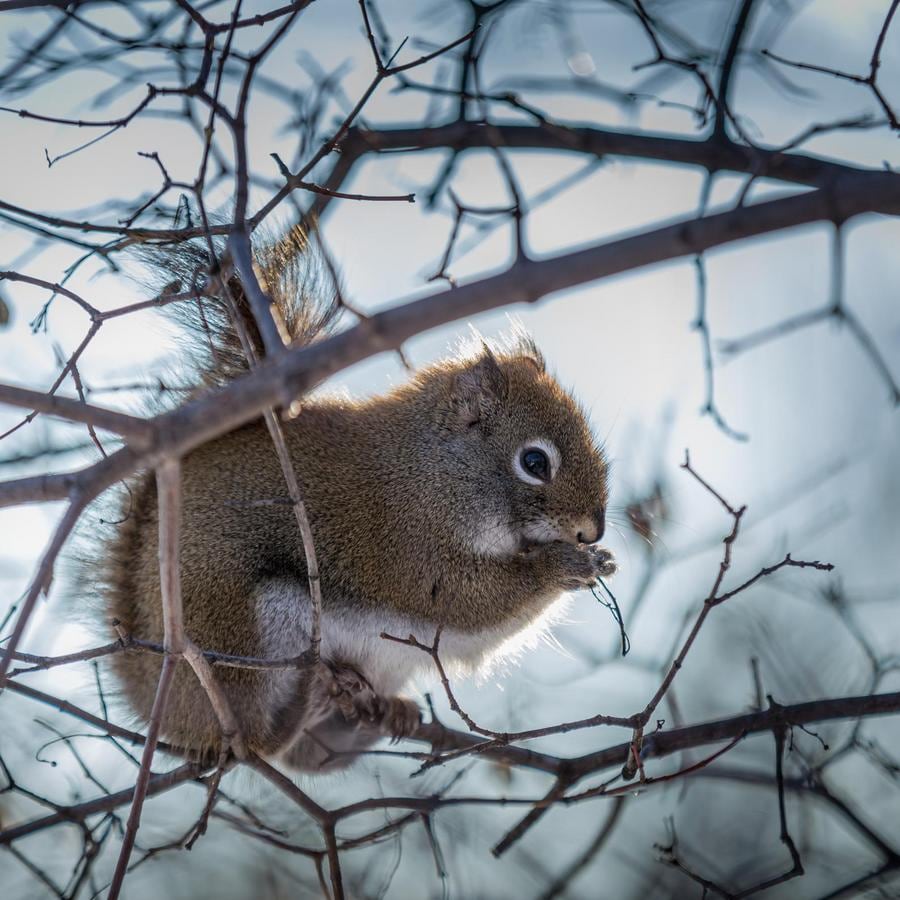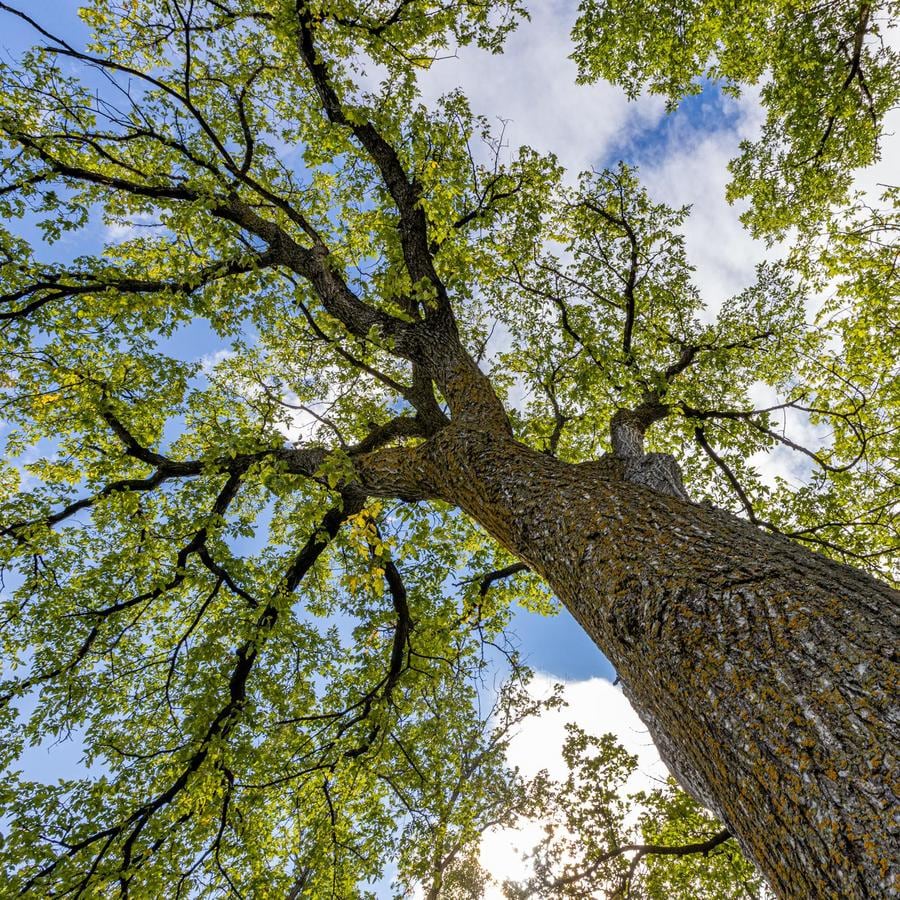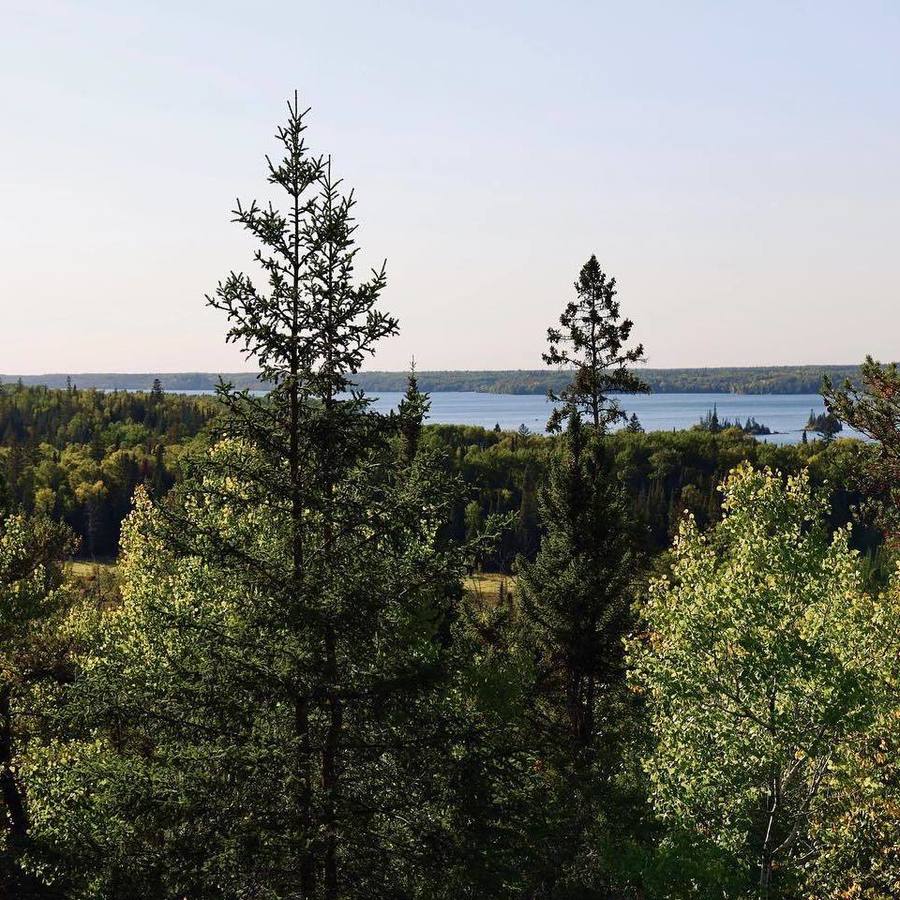From the stands of elm in The Grove within the Park to Canada’s vast boreal forests, trees are very important, and their effects extend far deeper and higher than you’d expect.
Looking up, you can see trees standing tall offering us shade from the summer sun and shelter from winter winds. You may find birds in the branches and insects crawling on the bark.
“Trees provide habitat and food sources for many living organisms,” said Ben Todd, an arborist here at Assiniboine Park. “Here at the Park, you can observe a variety of wildlife species - like squirrels and songbirds - in our trees. This year a great grey owl nested in the high limbs of a tree in the Leo Mol sculpture garden.”
Trees also support human life. In addition to supplying wood and fruit, trees play a key role in keeping the atmosphere clean. Trees filter pollution, cleaning the air we breathe, by producing oxygen and absorbing carbon dioxide and other pollutants.
In the city, trees decrease the heat absorption of concrete and can lower the air temperature. A tree canopy prevents sunlight from reaching the ground and a process called transpiration cools the air as leaves release small amounts of water vapour. This is becoming increasingly important in the face of climate change and more frequent extreme weather events.



Shifting our gaze down to the trunk and roots, we see trees also impact the ground below. Trees prevent erosion, aerate the soil, and filter groundwater. This helps to prevent flooding as well as improves soil health.
“Trees along the river in the Park are integral in supporting the stabilization of the riverbank, which is prone to compaction due to the walking and biking paths,” said Ben.
These benefits are multiplied in large groupings of trees. Therefore, keeping our natural forests healthy is critical.
A healthy forest has a distribution of young, middle-aged, and mature trees and understory plants, including ferns and grasses. Dead trees have their place in a healthy forest too, which may sound odd, but each fallen tree provides important habitat and a food source for different species.
Healthy and diverse forests are also more resilient to natural disturbances and disease. “Diversity in a forest is important because pathogens and pests, which infect one species of tree, can overtake a forest quickly and kill the entire stand if it lacks diversity,” said Ben. When a forest has a variety of trees, they protect each other by stopping diseases or pests from spreading.
Here in the Park, Ben and our team of arborists care for the trees, doing what they can to help them succeed. This includes pruning to encourage good structure and planting the trees with mycorrhizae mixture, which contains a fungus that forms a beneficial relationship with the tree’s roots, encouraging strong root growth. Freshly planted trees are watered and physically supported during the first few years.

Once a tree is old enough, our team allows it to thrive with minimal intervention. Maintenance pruning will take place for safety and minimize further damage to the trees from infection and disease, or unhealthy branches.
“Healthy mature trees produce the beautiful setting of the Park and create a place for recreation and rest,” said Ben. “It takes years for trees to grow to the size you see in the Park. Everyone can help give them the best chance for success.”
When you are visiting the Park, take care to avoid damaging trees when enjoying the facilities. Setting up hammocks and slack lines on the trees can be harmful as they injure the tree’s internal system if not cushioned adequately. Young trees have especially soft and sensitive bark, so avoid leaning anything against them or climbing on them, as tempting as it may be.
You can also help ensure that the beauty of Assiniboine Park is nurtured for generations to come with a donation to the Assiniboine Park Conservancy Trees for Tomorrow fund. Your gift will support the long-term cultivation and preservation of the beautiful tree canopy at Assiniboine Park.





